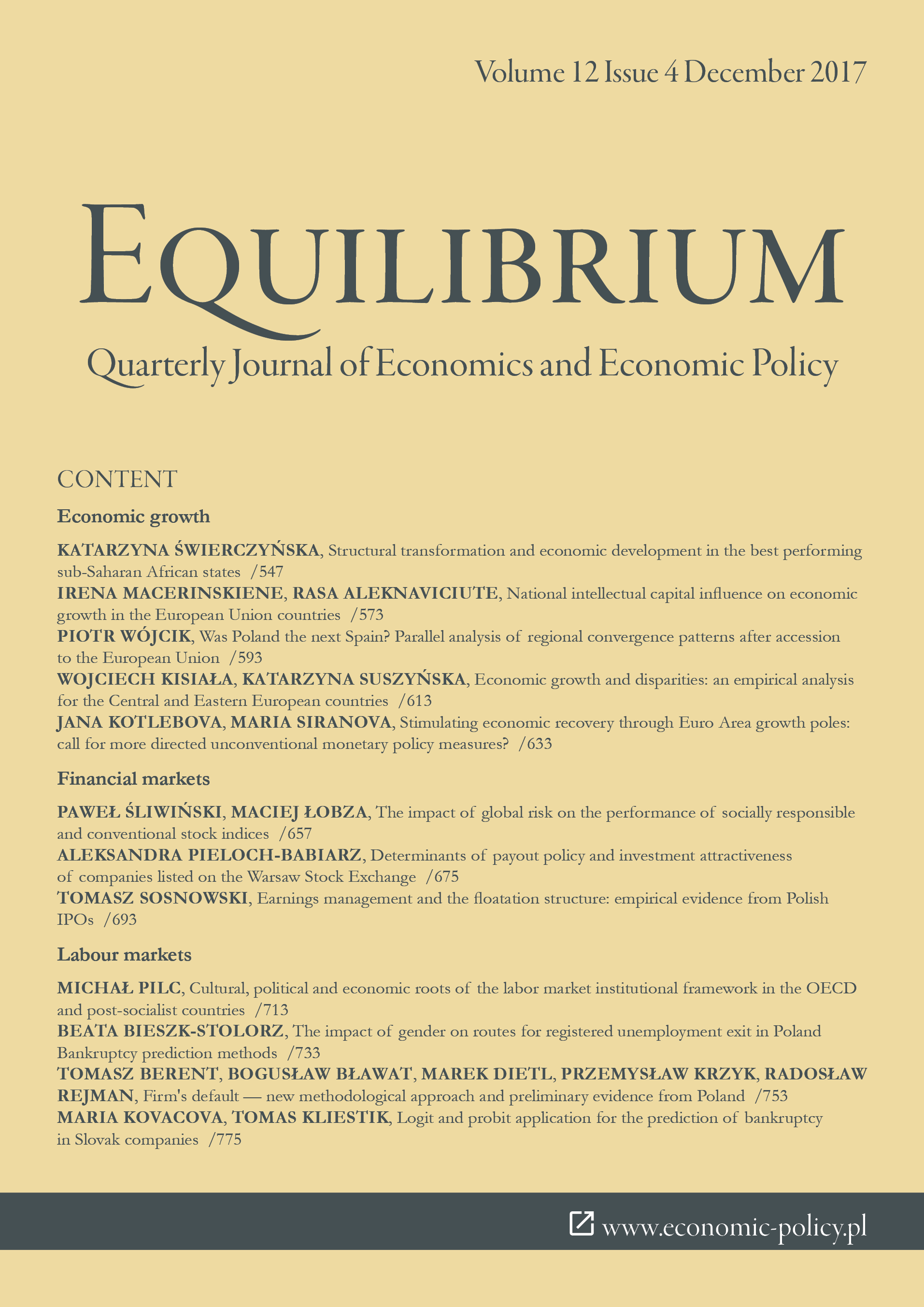Was Poland the next Spain? Parallel analysis of regional convergence patterns after accession to the European Union
Was Poland the next Spain? Parallel analysis of regional convergence patterns after accession to the European Union
Author(s): Piotr WójcikSubject(s): Economy, Economic policy, Evaluation research, Economic development, EU-Approach / EU-Accession / EU-Development
Published by: Instytut Badań Gospodarczych
Keywords: Poland vs Spain; parallel regional convergence; convergence of clubs; distribution dynamics; spatial model;
Summary/Abstract: Poland and Spain share many common features resulting both from similarities of historical experience, and also cultural, political, socio-demographic factors. Both countries have a similar area, population and GDP structure. They also share historical experience related to political and economic transformation after a long period of nondemocratic, centralized governments. Therefore, the experience of Spanish membership in the EU is often considered as a model for Poland. Purpose of the article: The purpose of this research is to perform a comparative empirical analysis of income convergence processes in Poland and Spain on a regional level. We aim to verify if and how these processes are related to one an-other (show similar paths). Special attention is paid to the periods after accession of these countries to the EU. Convergence patterns in both countries are compared with several tools. Methods: Spatial econometric model for absolute beta convergence, sigma convergence indicators and the analysis of distribution dynamics — transition matrices and kernel density estimation. Findings & Value added: The impact on EU accession on income convergence in Spain was positive both at the national and regional level. Regional convergence processes speedup and interregional disparities decreased. The poorest subregions had relatively high probability to increase their income and catch-up with initially more developed regions. In the first decade after accession to the EU Poland has also achieved a significant improvement of income indicators at the national level. However, empirical analyses of GDP per capita distribution and its dynamics at the regional level in Poland show that the above mentioned progress does not spread out proportionally on all regions. Neither beta nor sigma convergence is observed. Instead, relatively fastest growth of initially richest regions (mostly large cities) introduces convergence of clubs leading to polarization. EU accession has accelerated divergence processes in Poland.
Journal: Equilibrium. Quarterly Journal of Economics and Economic Policy
- Issue Year: 12/2017
- Issue No: 4
- Page Range: 593-611
- Page Count: 19
- Language: English

